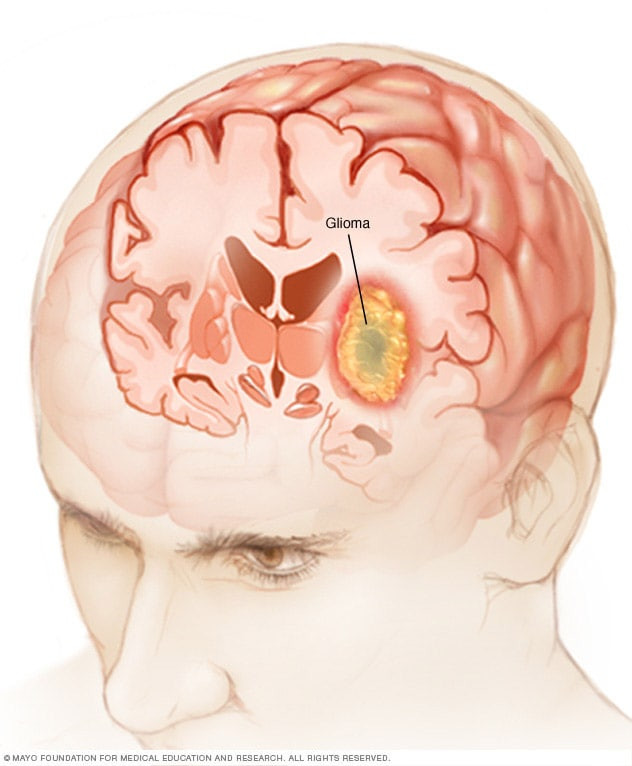Definisi
Tekanan intrakranial adalah tekanan di sekitar otak, di dalam tengkorak. Tekanan ini dipertahankan oleh tiga komponen utama, yaitu cairan di sekitar otak (cairan serebrospinal), darah, serta otak sendiri. Tengkorak merupakan ruang tertutup, sehingga peningkatan tekanan intrakranial akan menyebabkan ketiga komponen di atas berusaha beradaptasi. Namun, usaha adaptasi ini dapat berakibat fatal, bahkan mengancam nyawa.
Penyebab
Tekanan intrakranial bersifat tetap, begitu pula dengan volume isi tengkorak. Semakin tinggi volume isi tengkorak, semakin tinggi pula tekanan intrakranial. Apabila ada suatu penyebab yang menyebabkan volume salah satu komponen bertambah, komponen lainnya akan mengurangi volumenya sebagai bentuk adaptasi. Oleh karena itu, penyebab peningkatan tekanan intrakranial dapat dikelompokkan berdasarkan komponen mana yang mengalami peningkatan volume.
Peningkatan volume cairan serebrospinal dapat disebabkan oleh jumlah cairan yang meningkat atau berkurangnya penyerapan cairan. Peningkatan jumlah cairan serebrospinal dapat disebabkan oleh peningkatan produksi cairan dan tumor pada struktur yang menghasilkan cairan tersebut, yaitu pleksus koroid. Sementara itu, penurunan penyerapan cairan serebrospinal dapat disebabkan oleh sumbatan pada saluran yang dilewati cairan tersebut, serta peradangan pada selaput otak (meninges).
Peningkatan volume darah pada kepala dapat terjadi akibat berbagai hal. Aliran darah pada kepala dapat meningkat sebagai akibat dari kadar karbondioksida yang terlalu tinggi pada darah atau akibat adanya penipisan pembuluh darah seperti pada aneurisma. Selain itu, sumbatan dan macetnya aliran pembuluh darah balik juga dapat meningkatkan volume darah di kepala. Tidak hanya itu, kondisi-kondisi yang menyebabkan kemacetan aliran darah seperti gagal jantung juga dapat menyebabkan peningkatan volume darah.
Peningkatan volume pada otak dapat terjadi karena berbagai hal. Pembengkakan pada jaringan otak dapat terjadi akibat trauma, kekurangan oksigen, kadar amonia dan urea yang terlalu tinggi, serta penurunan kadar elektrolit natrium. Selain itu, peningkatan volume juga dapat terjadi akibat adanya darah atau jaringan lain di otak, seperti perdarahan pada otak dan sekitar otak, tumor, abses (nanah yang berkumpul di satu rongga), serta kematian jaringan otak.
Penyebab peningkatan tekanan intrakranial lainnya dapat disebabkan oleh penyebab di luar ketiga komponen di atas, misalnya seperti tekanan intrakranial tinggi yang tidak diketahui penyebabnya, kelainan bentuk tengkorak seperti kraniosinostosis, konsumsi vitamin A terlalu banyak, dan penggunaan antibiotik tetrasiklin.
Faktor Risiko
Faktor risiko peningkatan tekanan intrakranial berkaitan dengan keseimbangan komponen yang mempertahankan tekanan intrakranial tersebut. Faktor risiko tersering adalah riwayat trauma kepala, yang dapat mengakibatkan pembengkakan pada otak serta perdarahan pada kepala. Faktor risiko lainnya adalah stroke, epilepsi, kejang, kekurangan oksigen, dan infeksi pada selaput otak (meningitis).
Gejala
Tanda-tanda peningkatan tekanan intrakranial seringkali terabaikan karena dianggap tidak khas. Namun, beberapa tanda dan gejala ini, jika terjadi bersamaan, dapat menjadi penanda peningkatan tekanan intrakranial. Tanda dan gejala tersebut dapat berupa nyeri kepala yang semakin memberat, mual, muntah menyemprot, peningkatan tekanan darah drastis dari sebelumnya, kehilangan orientasi waktu dan tempat (serta orang apabila sudah parah), pandangan ganda, napas pendek, dan kejang. Apabila sudah sangat parah, dapat terjadi penurunan kesadaran hingga koma. Gejala-gejala ini juga dapat menandai kondisi lainnya seperti stroke, tumor pada otak, atau trauma kepala.
Diagnosis
Peningkatan tekanan intrakranial seringkali merupakan kasus kegawatdaruratan. Kecurigaan terhadap peningkatan tekanan intrakranial meningkat apabila pasien datang dengan gejala nyeri kepala, muntah, dan penurunan kesadaran mulai dari mengantuk hingga koma. Perubahan penglihatan dapat berupa buram, pandangan ganda, sensasi silau saat melihat cahaya, serta adanya pembengkakan saraf mata, yang dapat dilihat dengan oftalmoskop. Sementara itu, pada bayi berusia kurang dari 1 tahun, ubun-ubun kecil yang masih terbuka akan tampak menonjol.
Tanda peningkatan intrakranial lainnya disebut sebagai trias Cushing, yaitu tekanan darah tinggi, detak jantung menurun, dan napas tidak teratur. Tanda-tanda ini menunjukkan adanya penekanan pada otak yang menyebabkan otak terdorong ke bawah (herniasi). Tekanan darah tinggi menyebabkan refleks tubuh untuk menurunkan detak jantung, sementara napas tidak teratur disebabkan oleh penekanan batang otak.
Pemeriksaan kesadaran sangat penting untuk menentukan derajat penurunan kesadaran pada pasien yang dicurigai mengalami peningkatan tekanan intrakranial. Selain itu, pemeriksaan lainnya dapat berupa pemeriksaan refleks cahaya pada pupil mata, yang kemungkinan tidak dapat merespon dengan mengecil.
Pemeriksaan pencitraan dapat pula dilakukan. Pada kasus kegawatdaruratan, computed tomography (CT) scan diutamakan karena cukup baik untuk mendeteksi penyebab peningkatan tekanan intrakranial. Pemeriksaan magnetic resonance imaging (MRI) dapat pula digunakan untuk mendeteksi adanya kelainan pada jaringan otak, namun pemeriksaannya membutuhkan waktu yang lebih lama.
Pemantauan tekanan intrakranial secara invasif (melibatkan masuknya alat ke dalam tubuh) dapat pula dilakukan, namun harus dengan pemantauan ketat. Pasien yang akan dipantau tidak boleh mengalami cedera kepala terbuka, sadar namun memiliki risiko peningkatan tekanan intrakranial di bawah pengaruh obat bius, mengalami perdarahan di kepala namun terpasang selang napas, serta cedera kepala sedang yang berisiko mengalami pembengkakan otak.
Pemeriksaan laboratorium yang dapat dilakukan berupa pemeriksaan darah lengkap, elektrolit darah, serta fungsi ginjal. Pemeriksaan ini diperlukan untuk mengetahui kemungkinan penyebab peningkatan tekanan intrakranial serta memastikan apakah tubuh dapat merespon obat-obatan yang akan diberikan. Pemeriksaan pungsi lumbal, yang dilakukan dengan menusukkan jarum ke cairan serebrospinal di tulang belakang, dapat pula dilakukan untuk memperkirakan tekanan intrakranial dan mengambil cairan untuk diperiksa lebih lanjut. Pungsi lumbal juga dapat digunakan untuk menurunkan tekanan intrakranial dengan mengeluarkan cairan serebrospinal.
Tata Laksana
Pada kasus peningkatan tekanan intrakranial, segala usaha untuk membuka jalan napas (airway), serta stabilisasi pernapasan (breathing), dan peredaran darah (circulation) menjadi prioritas. Tata laksana bertujuan untuk menurunkan tekanan intrakranial, kemudian menangani penyebabnya. Sebelum memberikan obat-obatan, posisi kepala perlu dinaikkan 30 derajat atau lebih dan usahakan agar leher di tengah, agar aliran darah lancar mengikuti gravitasi ke bawah.
Usaha lainnya untuk menurunkan tekanan intrakranial adalah pemasangan selang napas dan meningkatkan laju napas untuk menurunkan kadar karbondioksida pada otak. Pemberian obat-obatan dapat pula dilakukan untuk menurunkan tekanan intrakranial, seperti manitol dan steroid. Cairan-cairan dengan konsentrasi lebih tinggi daripada darah (hipertonik) dapat pula digunakan apabila terjadi pembengkakan otak. Obat-obatan lain dapat pula diberikan, misalnya untuk menurunkan produksi cairan serebrospinal. Selain itu, suhu tubuh dapat didinginkan hingga 32-35 derajat Celsius (normalnya 36,5-37,5 derajat Celsius) untuk menyempitkan pembuluh darah pada otak.
Apabila segala usaha tersebut gagal, pembedahan dapat dilakukan. Salah satu pembedahan yang dapat dilakukan adalah kraniektomi dekompresi, yang dilakukan dengan membuka tengkorak dan membiarkan otak membengkak tanpa menekan struktur lainnya.
Komplikasi
Peningkatan tekanan intrakranial dapat menyebabkan komplikasi berupa gangguan penglihatan karena dekat dengan saraf-saraf yang mengatur penglihatan dan gerakan bola mata. Gangguan penglihatan ini dapat berupa pandangan buram atau ganda, serta lebih mudah merasa silau. Jika peningkatan tekanan intrakranial terlalu tinggi, kesadaran dapat menurun, mulai dari mengantuk, kebingungan, hingga koma. Apabila otak terlalu tertekan hingga turun, batang otak dapat tertekan sehingga menyebabkan napas tidak teratur, dan jika terus berlanjut, dapat menyebabkan kematian batang otak.
Pencegahan
Peningkatan tekanan intrakranial kemungkinan tidak dapat dicegah, namun penyebabnya dapat dicegah, misalnya seperti trauma kepala. Apabila Anda sedang mengendarai sepeda, sepeda motor, atau berolahraga kontak atau ekstrem, gunakan helm. Selain itu, jika Anda berkendara dengan mobil, pakailah sabuk pengaman. Pada usia lanjut, penggunaan tongkat dapat mencegah jatuh. Pemasangan handrail juga dapat membantu orang lanjut usia berjalan dengan lebih hati-hati. Lantai rumah harus selalu dijaga agar selalu kering, tidak licin, dan tidak berantakan, untuk menurunkan risiko jatuh pada orang lanjut usia.
Kapan Harus ke Dokter?
Segeralah ke dokter apabila Anda atau orang di dekat Anda mengalami nyeri kepala hebat, disertai dengan mual, muntah, pandangan ganda, serta penurunan kesadaran seperti cenderung mengantuk, kebingungan, atau bahkan pingsan tiba-tiba. Hal ini perlu diwaspadai terutama apabila baru saja mengalami trauma pada kepala, atau memiliki riwayat tekanan darah tinggi, karena risiko stroke meningkat. Peningkatan tekanan intrakranial merupakan kondisi yang sangat mengancam nyawa, sehingga tata laksana segera sangat penting untuk menyelamatkan orang tersebut.
Mau tahu informasi seputar penyakit lainnya? Cek di sini, ya!
- dr Hanifa Rahma
Carey, E., & Weatherspoon, D. (2018). Increased Intracranial Pressure (ICP): Symptoms and Treatments. Retrieved 17 December 2021, from https://www.healthline.com/health/increased-intracranial-pressure
Gupta, G. (2018). Intracranial Pressure Monitoring: Background, Indications, Contraindications. Retrieved 17 December 2021, from https://emedicine.medscape.com/article/1829950-overview#a4
Pinto, V., Tadi, P., & Adeyinka, A. (2021). Increased Intracranial Pressure. Retrieved 17 December 2021, from https://www.ncbi.nlm.nih.gov/books/NBK482119/












